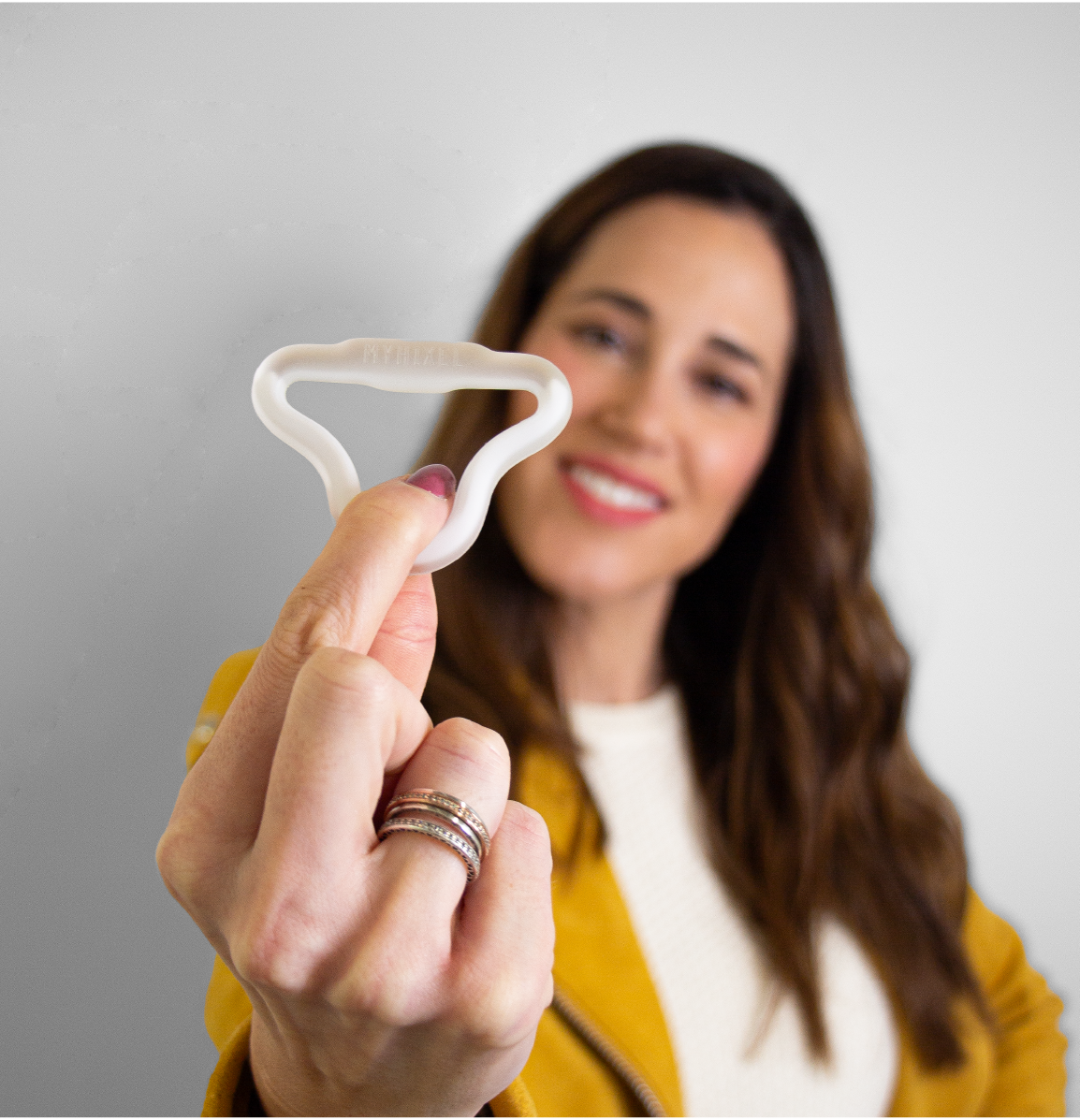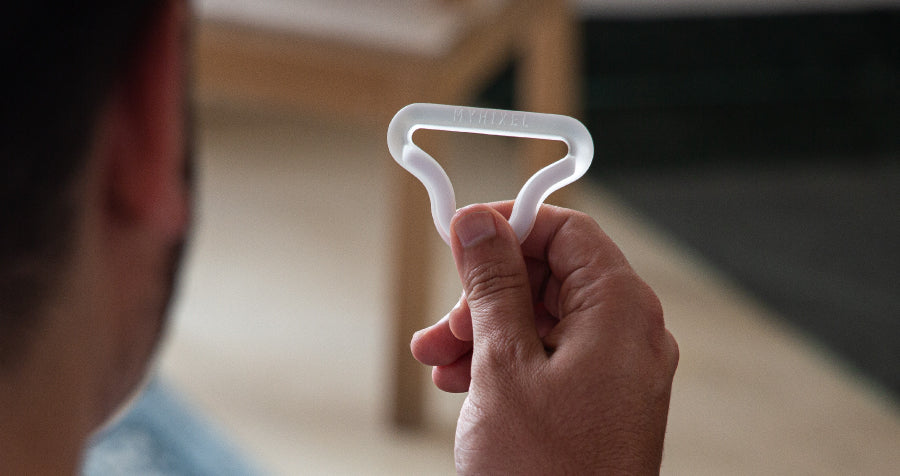Erection problems are the main reason why a man often experiences insecurities in bed. And the fact is that, when a man has difficulties in achieving or maintaining an erection on a recurring basis, it is completely natural that a series of doubts and questions arise, such as “why is this happening to me?” or “what am I doing wrong?”. What is clear is that erectile dysfunction has many possible explanations, from physical to emotional or psychological factors, so, many times, the question is not what is happening to us in bed, but what is happening to us outside of it.
Causes of the Erectile Dysfunction

If we look at the physical or physiological reasons, the first thing we have to understand is that erection is a more complex process than it seems. So, that phrase that says “it is easier than the mechanism of a penis” is not as true as you think. In fact, this process involves the circulatory system, the nervous system, hormonal balance and overall health. Therefore, it is to be expected that problems such as diabetes, high blood pressure and cardiovascular diseases that affect the blood flow to the penis can interfere with the quality of our erections (Kaiser et al., 2004). Similarly, if you take a number of medications frequently (antidepressants or blood pressure drugs) you may also suffer from problems in your erectile response.

On the other hand, we cannot leave aside the weight of psychological factors. Stress, sexual anxiety, depression or self-esteem problems directly influence our erectile control (Rajkumar & Kumaran, 2015). Not to mention partner problems or a history of negative sexual experiences, which give rise to loops in which fear of failure further reinforces dysfunction.
Symptoms of the Erectile Dysfunction
Although we speak of “erectile dysfunction” in the singular, there are different degrees and forms of experiencing it and it is not simply reduced to the impossibility of having an erection. That is why it is very important to identify the symptoms to know when professional help is needed.
As you can imagine, the main symptom is the difficulty in achieving or maintaining an erection firm enough to fully enjoy sexual intercourse. But we need to distinguish between occasional or constant dysfunction: when the problem occurs in more than 50% of encounters, it is considered a problem that requires professional evaluation (Burnett et al., 2018).
In addition to erection problems, many men experience a decrease in sexual desire, which is partly due to frustration and fear of failure. And the fact is that lack of confidence in one's own ability to have an erection often generates a domino effect that goes beyond sexual response and also affects self-esteem and the partner.
For those seeking complementary support while addressing the psychological and physical aspects of ED, devices like the MYHIXEL Ring can provide a discreet and effective way to enhance erection quality and confidence.
Psychological and Emotional Consequences of the Erectile Dysfunction
As experts in the field, we know that sexuality is not limited to the physical. In fact, erectile dysfunction can have quite complex emotional consequences that have to do with the perception of masculinity, personal well-being and the quality of our relationship.
With regard to the partner, erectile dysfunction is often a source of misunderstandings, estrangement and even conflict. In fact, many couples interpret the problem as a lack of interest that leads to insecurities and resentment.

One of the most common psychological effects is anticipatory anxiety. When a man has already had an episode of erectile dysfunction, he often develops a certain fear of it happening again, which paradoxically increases the likelihood of it happening. This type of anxiety negatively influences arousal and enjoyment, and for many, turns sex into a source of stress instead of pleasure (Montorsi et al., 2006).

As we mentioned earlier, self-esteem and self-confidence are also severely affected. For many men, erection is a symbol of virility, so if they have problems with their erectile control they may have feelings of shame, worthlessness or even depression. The problem is that these feelings are not reserved for the bedroom, but also influence other areas of life, such as work or social plans.

At MYHIXEL we understand the importance of men’s mental health, and for over 7 years we've been committed to helping men regain control and confidence. Beyond offering solutions to premature ejaculation, we’ve developed the MYHIXEL Ring, an ergonomic medical-grade silicone ring designed to improve erection quality and duration. Its adaptive design maintains rigidity naturally without blocking the urethra—offering a drug-free, side-effect-free solution .
VIEW MYHIXEL RINGErectile Dysfunction and Ages
Contrary to what many may think, erectile dysfunction is a problem that affects more and more young people, although its causes and manifestations vary depending on the stage of life in which it occurs. For example, if we look only at factors such as aging or vascular changes, the prevalence increases with age. However, more and more young people are experiencing erectile difficulties related to psychological factors, certain habits and excessive consumption of pornography (Park et al., 2016). Next, let's analyze how erectile dysfunction is influenced by age.
Erectile Dysfunction Problems in Adolescents
Although erectile dysfunction in adolescents used to be less common than in adults, an increase is being observed in recent years suggesting the influence of new psychological and sociocultural factors. One of the main triggers at this stage is performance anxiety, especially in young people who begin intimate encounters with very high expectations or fear of failure (Ze, O., Thoma, P., & Suchan., 2014).
We cannot leave aside the influence of pornography consumption. Some studies indicate that the abuse of this content can generate a desensitization to sexual stimuli presented in reality, resulting in difficulties in achieving minimal arousal in sexual encounters (Jacobs, 2021). This phenomenon is known as “pornography-induced erectile dysfunction” and is increasingly studied because of its great impact. On the other hand, unhealthy lifestyle habits (alcohol, drugs or sedentary lifestyle) also affect erectile response from an early age.
Erectile Dysfunction Problems in Adults
In adult men, the roots of dysfunction change and can be linked to both physical and psychological factors. For example, work stress, financial worries and lack of sleep are some of the main causes of the problem in ages between 30 and 50 years, (McCabe et al., 2016). Another factor is the pressure to maintain optimal sexual performance, which results in self-demand.
At the physical level, we have to mention pathologies such as hypertension, type 2 diabetes and obesity, which start to play a determining role in male sexuality. These problems affect blood circulation, hindering the irrigation of the penis and, therefore, the ability to maintain a firm erection (Corona et al., 2013).
Another aspect to consider in adult life is the influence of couple dynamics. As we mentioned earlier, dysfunction can be a source of conflict in the relationship which, added to other factors such as communication problems or monotony, can lead to a decrease in the quality of intimate encounters.
How to Prevent the Erectile Dysfunction
To prevent erectile dysfunction we have to be clear that it is not enough to avoid physical problems, but also to take care of our mind. Fortunately, there are several ways to reduce the risk of having this condition.

The first thing we need to discuss is lifestyle. One way to improve our erectile function is by taking care of our circulation through regular physical activity, especially cardiovascular exercises such as running or swimming (Silva et al., 2017). And whenever we talk about physical exercise, we have to accompany it with a good diet, based on a balanced diet, rich in antioxidants and low in saturated fats, to keep the blood vessels in good condition and prevent certain metabolic diseases that affect sexual response.

At the psychological level, it is very useful to integrate practices such as meditation, mindfulness and cognitive-behavioral therapy to reduce stress and anxiety. These have been shown to be effective in improving sexual confidence and reducing performance anxiety (Ciaurriz, Villena & Chiclana, 2024). Although we cannot leave behind the importance of improving communication with your partner to be able to talk about sex without taboos and remove pressures and expectations.

Finally, a recommendation that is almost obligatory for people over 40 years of age is to have regular medical check-ups. Many diseases that affect erection can be detected and treated in time with proper medical follow-up. Don't forget that sexual health is a reflection of general well-being, so if you take care of your body and mind you are preventing erectile dysfunction in the long term.
How to Combat the Erectile Dysfunction
Let's suppose that erectile dysfunction has already appeared in your life in a casual or recurrent way. It is time for you to assess and take into account both physical causes and psychological factors, since the first step is to identify the underlying cause. In many cases, erectile dysfunction is a symptom of a medical condition, as we mentioned above. But if the cause is psychological, you can consider going to sex therapy and integrating some strategies to reduce stress. However, there are many treatments for erectile dysfunction, so below, let's focus on the best ones to combat it.
When talking about treatments for erectile dysfunction we can categorize them into three types: pharmacological, therapeutic and alternative. Of course, depending on the cause and severity of the problem, one or more of them will be recommended.
At MYHIXEL, we’ve designed a natural, drug-free solution—the MYHIXEL Ring—to help improve erection quality and support your confidence.
Treatments for the Erectile Dysfunction
Medications
The most famous are phosphodiesterase type 5 (PDE5) inhibitors, such as sildenafil (Viagra), tadalafil (Cialis) or vardenafil (Levitra), which are the most widely used to treat erectile dysfunction as they improve blood flow to the penis and have proven to be effective in most cases (Hatzimouratidis et al., 2015). However, they are neither a definitive cure nor are they exempt from generating side effects such as headaches or nasal congestion.
Psychological and sexological therapy
In cases where erectile dysfunction is of psychological origin, therapy is a very effective tool. They not only help reduce performance anxiety, but also improve self-esteem and strengthen couple communication (Ze, Thoma & Suchan, 2014).
Advanced alternatives
There are some men who respond well to conventional treatments. In these cases, alternatives such as intracavernous injections, vacuum devices and, in more severe cases, penile prosthesis implants may be considered. However, it is recommended to have previously tried the other methods (Rubio-Aurioles et al., 2008).
The most famous are phosphodiesterase type 5 (PDE5) inhibitors, such as sildenafil (Viagra), tadalafil (Cialis) or vardenafil (Levitra), which are the most widely used to treat erectile dysfunction as they improve blood flow to the penis and have proven to be effective in most cases (Hatzimouratidis et al., 2015). However, they are neither a definitive cure nor are they exempt from generating side effects such as headaches or nasal congestion.
In cases where erectile dysfunction is of psychological origin, therapy is a very effective tool. They not only help reduce performance anxiety, but also improve self-esteem and strengthen couple communication (Ze, Thoma & Suchan, 2014).
There are some men who respond well to conventional treatments. In these cases, alternatives such as intracavernous injections, vacuum devices and, in more severe cases, penile prosthesis implants may be considered. However, it is recommended to have previously tried the other methods (Rubio-Aurioles et al., 2008).
Erectile Dysfunction Definitive Solution

Although a priori improving erection is seen as a difficult problem to solve, in most cases it has a solution. There are products to improve your erections and your sexual health, such as the MYHIXEL Ring, an innovative device designed to optimize erections naturally and without drugs. This device helps maintain blood flow in the penis, prolonging erections and improving the quality of sexual intercourse.
Best of all, unlike other rings, this one allows you to reach climax without feeling uncomfortable pressure on the penis at the moment of ejaculation. It is discreet, fits all sizes and is available in 3 models with 3 different intensities for every moment, preference or need.
VIEW MYHIXEL RINGSolutions for Erectile Dysfunction
Although some men consider medication to be the quickest solution, the real change comes when you combine good habits and methods that require a comprehensive change. The key is not to give up and seek help from a specialist when necessary. You know that with the right tools, it is possible to regain confidence and pleasure in intimacy.
As you may have already seen, there is no single “cure” for erectile dysfunction, as its treatment depends on the individual. However, there are strategies that are very effective in restoring erectile function in the long term:
-
 Improve vascular and hormonal health: from having a healthy weight, to controlling blood pressure to significantly improve erectile function.
Improve vascular and hormonal health: from having a healthy weight, to controlling blood pressure to significantly improve erectile function. -
 Reducing sexual anxiety: with psychological therapy and relaxation techniques to reduce stress and anxiety.
Reducing sexual anxiety: with psychological therapy and relaxation techniques to reduce stress and anxiety. -
 Personalized medical treatments: from drugs to surgical procedures.
Personalized medical treatments: from drugs to surgical procedures.
References
- Burnett, A. L., Nehra, A., Breau, R. H., Culkin, D. J., Faraday, M. M., Hakim, L. S., Heidelbaugh, J., Khera, M., McVary, K. T., Miner, M. M., Nelson, C. J., Sadeghi-Nejad, H., Seftel, A. D., & Shindel, A. W. (2018). Erectile Dysfunction: AUA Guideline. The Journal of Urology, 200(3), 633–641. https://doi.org/10.1016/j.juro.2018.05.004
- Ciaurriz Larraz, A. M., Villena Moya, A., & Chiclana Actis, C. (2024). Mindfulness-based intervention and sexuality: a systematic review. Trends in Psychiatry and Psychotherapy, 46, e20210459. https://doi.org/10.47626/2237-6089-2021-0459
- Corona, G., Rastrelli, G., Maseroli, E., Forti, G., & Maggi, M. (2013). Sexual function of the ageing male. Best Practice & Research. Clinical Endocrinology & Metabolism, 27(4), 581–601. https://doi.org/10.1016/j.beem.2013.05.007
- Hatzimouratidis, K., Eardley, I., Giuliano, F., Moncada, I., & Salonia, A. (2015). Guidelines on male sexual dysfunction: erectile dysfunction and premature ejaculation. European Association of Urology Web Site.http://uroweb.org/guideline/male-sexual-dysfunction/. Updated 2015. European Urology, 68(4), e77. https://doi.org/10.1016/j.eururo.2015.06.013
- Jacobs, T., Geysemans, B., Van Hal, G., Glazemakers, I., Fog-Poulsen, K., Vermandel, A., De Wachter, S., & De Win, G. (2021). Associations Between Online Pornography Consumption and Sexual Dysfunction in Young Men: Multivariate Analysis Based on an International Web-Based Survey. JMIR Public Health and Surveillance, 7(10), e32542. https://doi.org/10.2196/32542
- Kaiser, D. R., Billups, K., Mason, C., Wetterling, R., Lundberg, J. L., & Bank, A. J. (2004). Impaired brachial artery endothelium-dependent and -independent vasodilation in men with erectile dysfunction and no other clinical cardiovascular disease. Journal of the American College of Cardiology, 43(2), 179–184. https://doi.org/10.1016/j.jacc.2003.07.042
- McCabe, M. P., Sharlip, I. D., Atalla, E., Balon, R., Fisher, A. D., Laumann, E., Lee, S. W., Lewis, R., & Segraves, R. T. (2016). Definitions of Sexual Dysfunctions in Women and Men: A Consensus Statement From the Fourth International Consultation on Sexual Medicine 2015. The Journal of Sexual Medicine, 13(2), 135–143. https://doi.org/10.1016/j.jsxm.2015.12.019
- Montorsi, P., Ravagnani, P. M., Galli, S., Rotatori, F., Veglia, F., Briganti, A., Salonia, A., Dehò, F., Rigatti, P., Montorsi, F., & Fiorentini, C. (2006). Association between erectile dysfunction and coronary artery disease. Role of coronary clinical presentation and extent of coronary vessels involvement: the COBRA trial. European Heart Journal, 27(22), 2632–2639. https://doi.org/10.1093/eurheartj/ehl142
- Park, B. Y., Wilson, G., Berger, J., Christman, M., Reina, B., Bishop, F., Klam, W. P., & Doan, A. P. (2016). Is Internet Pornography Causing Sexual Dysfunctions? A Review with Clinical Reports. Behavioral Sciences (Basel, Switzerland), 6(3), 17. https://doi.org/10.3390/bs6030017
- Rajkumar, R. P., & Kumaran, A. K. (2015). Depression and anxiety in men with sexual dysfunction: a retrospective study. Comprehensive Psychiatry, 60, 114–118. https://doi.org/10.1016/j.comppsych.2015.03.001
- Rubio-Aurioles, E., Casabé, A., Torres, L. O., Quinzaños, L., Glina, S., Filimon, I., Kopernicky, V., & Leñero, E. (2008). Efficacy and safety of tadalafil in the treatment of Latin American men with erectile dysfunction: results of integrated analyses. The Journal of Sexual Medicine, 5(8), 1965–1976. https://doi.org/10.1111/j.1743-6109.2008.00860.x
- Silva, A. B., Sousa, N., Azevedo, L. F., & Martins, C. (2017). Physical activity and exercise for erectile dysfunction: systematic review and meta-analysis. British Journal of Sports Medicine, 51(19), 1419–1424. https://doi.org/10.1136/bjsports-2016-096418
Ze, O., Thoma, P., & Suchan, B. (2014). Cognitive and affective empathy in younger and older individuals. Aging & Mental Health, 18(7), 929–935. https://doi.org/10.1080/13607863.2014.899973





